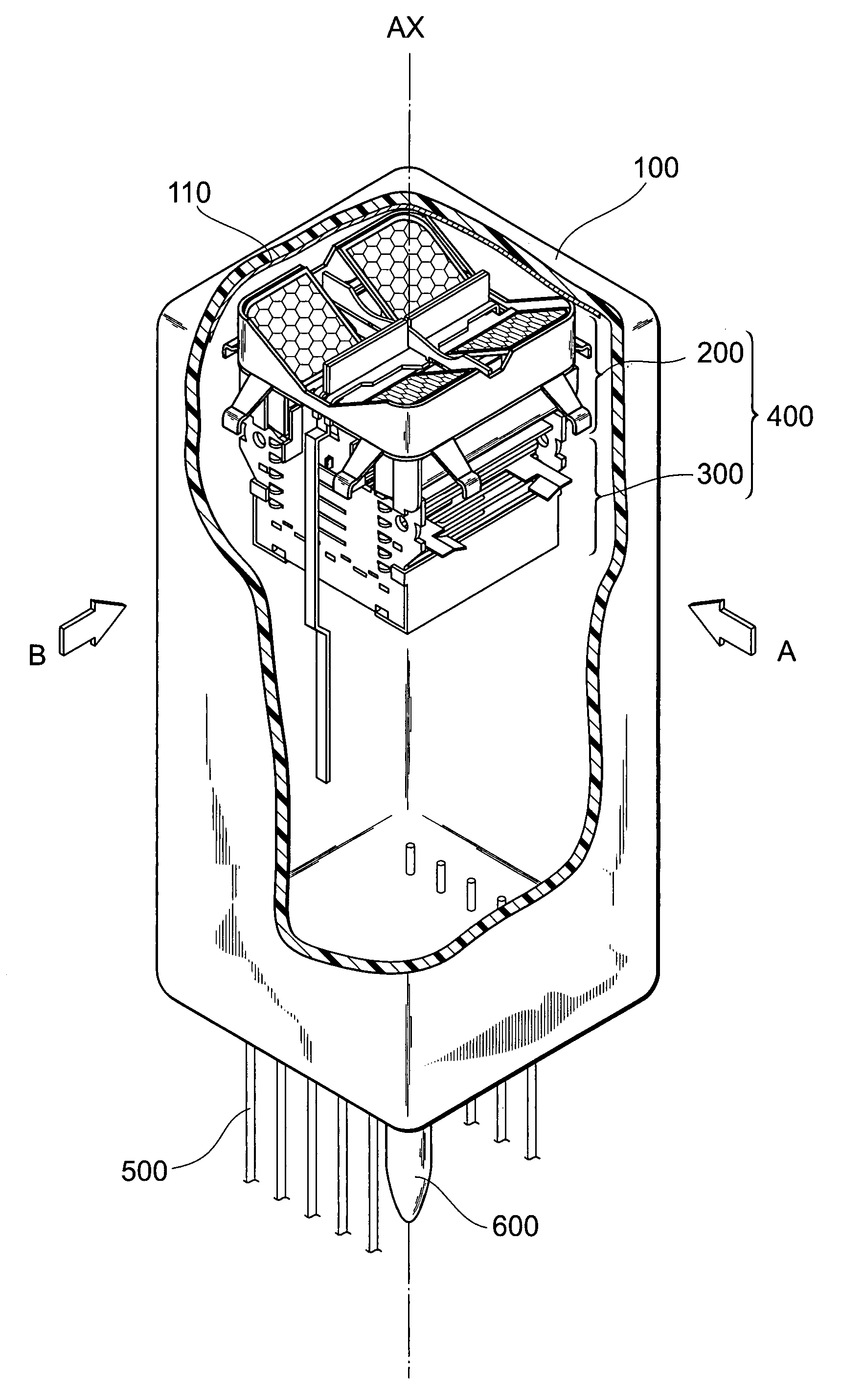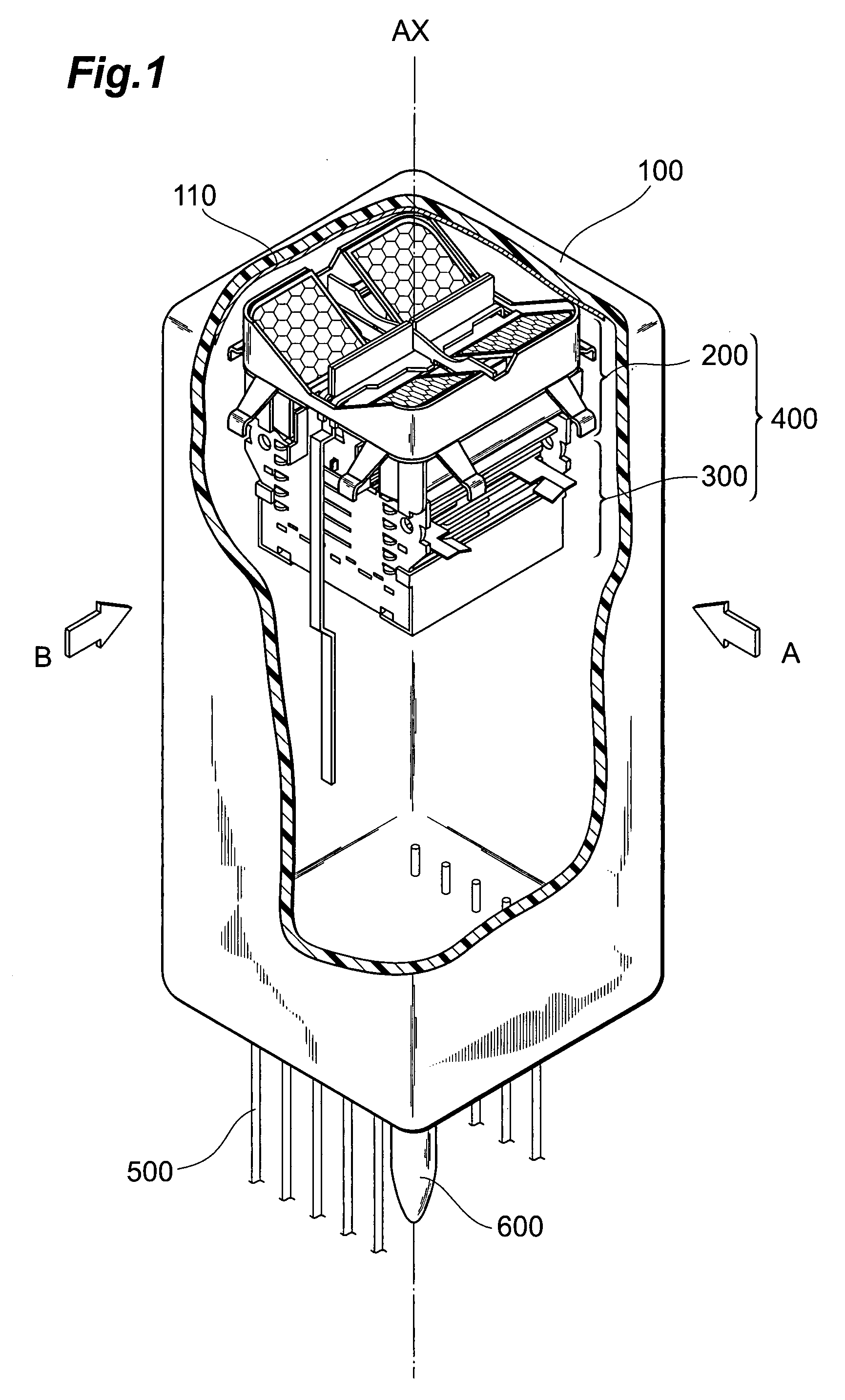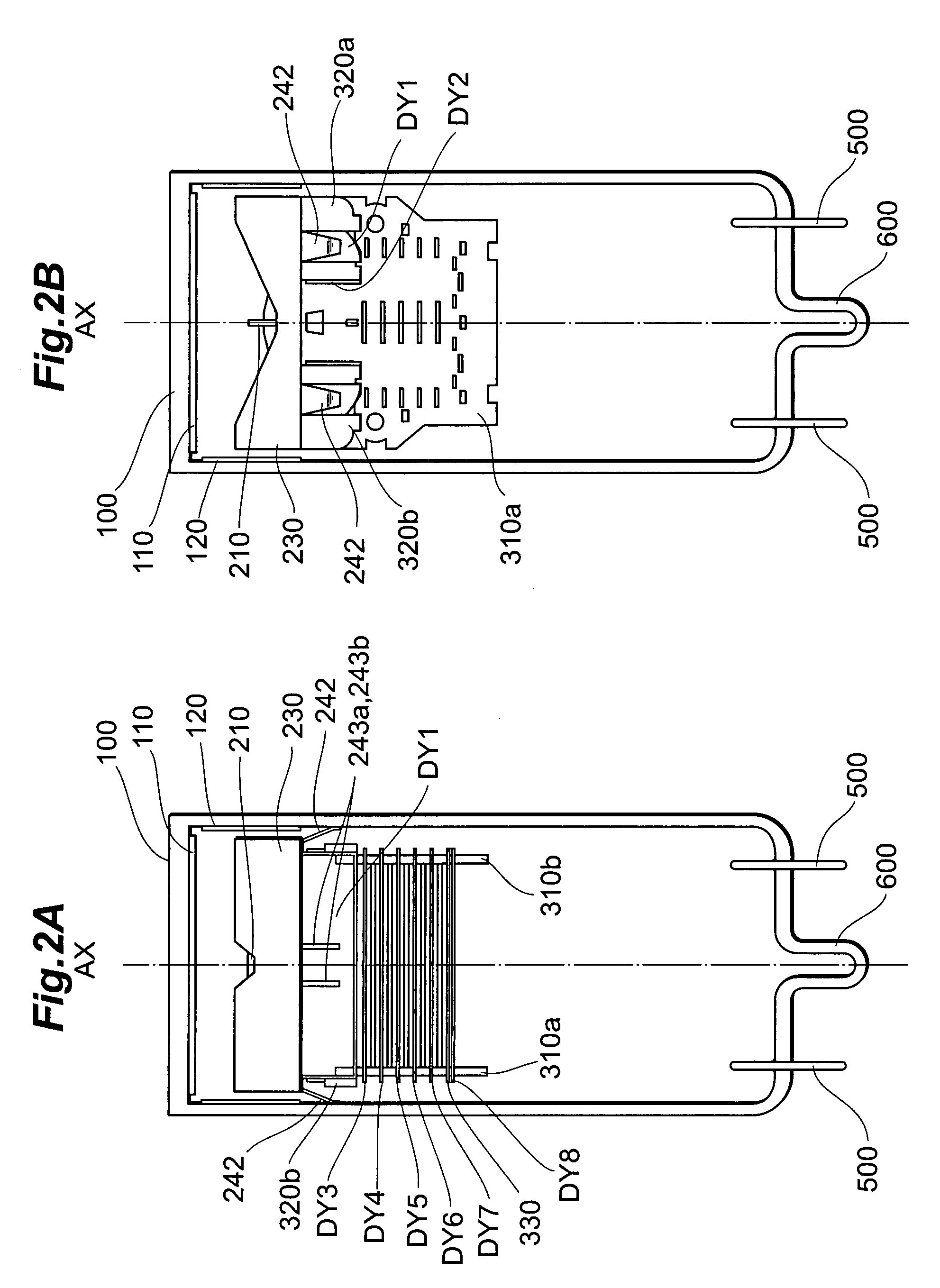Photomultiplier
a multi-channel photomultiplier and photomultiplier technology, applied in the field of photomultipliers, can solve the problems of no improvement, achieve the effects of improving the high-speed response properties of the multi-channel photomultiplier as a whole, reducing electron transit time differences, and improving the electron transit time differences in each electron multiplier channel
- Summary
- Abstract
- Description
- Claims
- Application Information
AI Technical Summary
Benefits of technology
Problems solved by technology
Method used
Image
Examples
Embodiment Construction
[0034]In the following, embodiments of a photomultiplier according to the present invention will be explained in detail with reference to FIGS. 1, 2A, 2B, 3, 4A-5C, 6-10, and 11A-13C. In the explanation of the drawings, constituents identical to each other will be referred to with numerals identical to each other without repeating their overlapping descriptions.
[0035]FIG. 1 is a partially cutaway view showing a schematic configuration of an embodiment of a photomultiplier according to the present invention.
[0036]As shown in FIG. 1, the photomultiplier according to the present invention comprises a sealed container 100, with a pipe 600, which is used to depressurize the interior to a predetermined degree of vacuum (and the interior of which is filled after vacuum drawing), provided at a bottom portion, and comprises a photocathode 110 and an electron multiplier section 400 which are provided inside the sealed container 100.
[0037]The sealed container 100 is constituted by a cylindrica...
PUM
 Login to View More
Login to View More Abstract
Description
Claims
Application Information
 Login to View More
Login to View More - R&D
- Intellectual Property
- Life Sciences
- Materials
- Tech Scout
- Unparalleled Data Quality
- Higher Quality Content
- 60% Fewer Hallucinations
Browse by: Latest US Patents, China's latest patents, Technical Efficacy Thesaurus, Application Domain, Technology Topic, Popular Technical Reports.
© 2025 PatSnap. All rights reserved.Legal|Privacy policy|Modern Slavery Act Transparency Statement|Sitemap|About US| Contact US: help@patsnap.com



